It’s spring, which means it’s prime foraging season for edible plants. I went foraging mushrooms in Spain and I was hooked.
This beginner’s guide to spring foraging edible plants compiles all the research I did before heading out and what I’ve learned over the years.
Foraging has become really popular in the last few years.
Whereas once people hadn’t really heard of ramps (aka wild leeks) they are on many menus in Toronto right now.
With a rise in popularity it also means they can be expensive.
But come on, how many home cooks can spend $20/lb for ingredients.
Ramps are amazing but it’s tough to justify if you’re just experimenting with these wild leeks.
Now it’s spring foraging season and it is such a treat to just get out of the city and spend the day in fresh air.

Foraging Wild Plants Rules 101
There are a few universal rules to foraging edible plants; it’s not a law but everyone tends to abide.
Respect endangered species
I was hoping to forage edible flowers only to discover the lovely purple plant was on Ontario’s endangered list.
It’s not only illegal to pick but against our philosophy to respect the land.
You may see a large patch of something endangered and think it’s no longer at risk. But you could be jeopardizing the species fight back to normal levels.
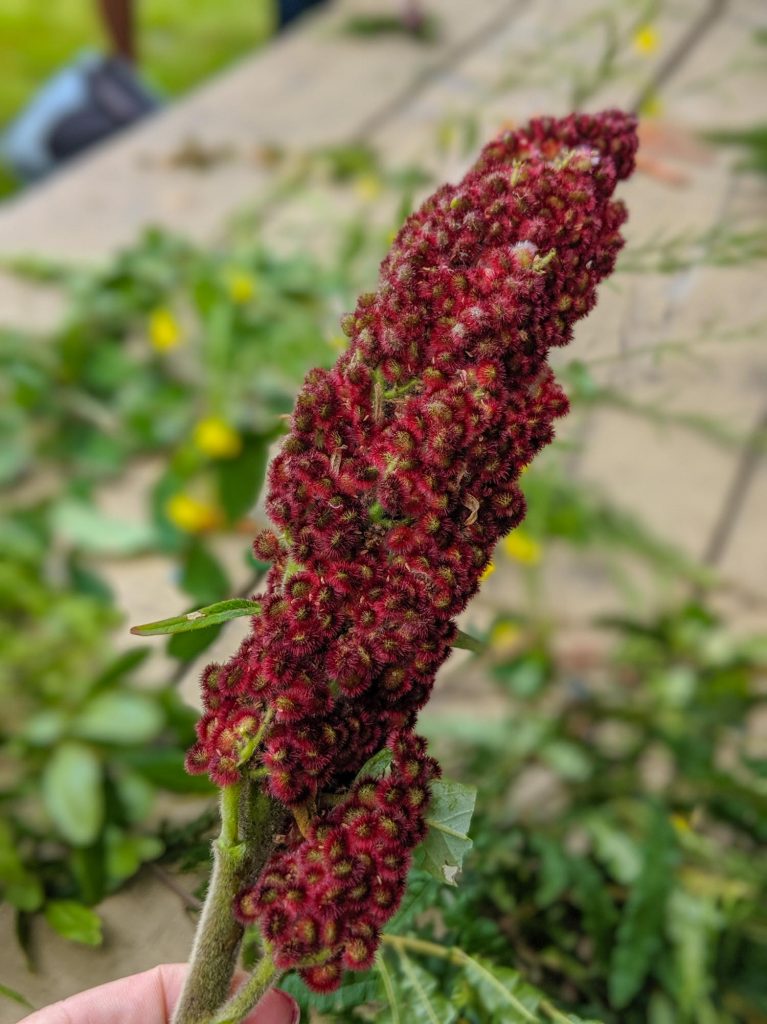
Learn to identify edible plants
I use the Peterson Field Guide to wild edible plants which is really handy because it identifies plants by colour.
If you aren’t 100% sure you’ve picked an edible plant ask someone who knows. Never eat something if you aren’t sure it’s edible.
I was so excited when I picked this beautiful plant thinking it was an edible lily but no one could verify it was edible so I had to toss it. It’s not worth the risk.
Never over harvest
Never take more than 10-20% of the crop so that it will return next year.
Unfortunately with foraging becoming more and more popular it means we risk endangering popular edible plants.
Never forage more than you could reasonably use.
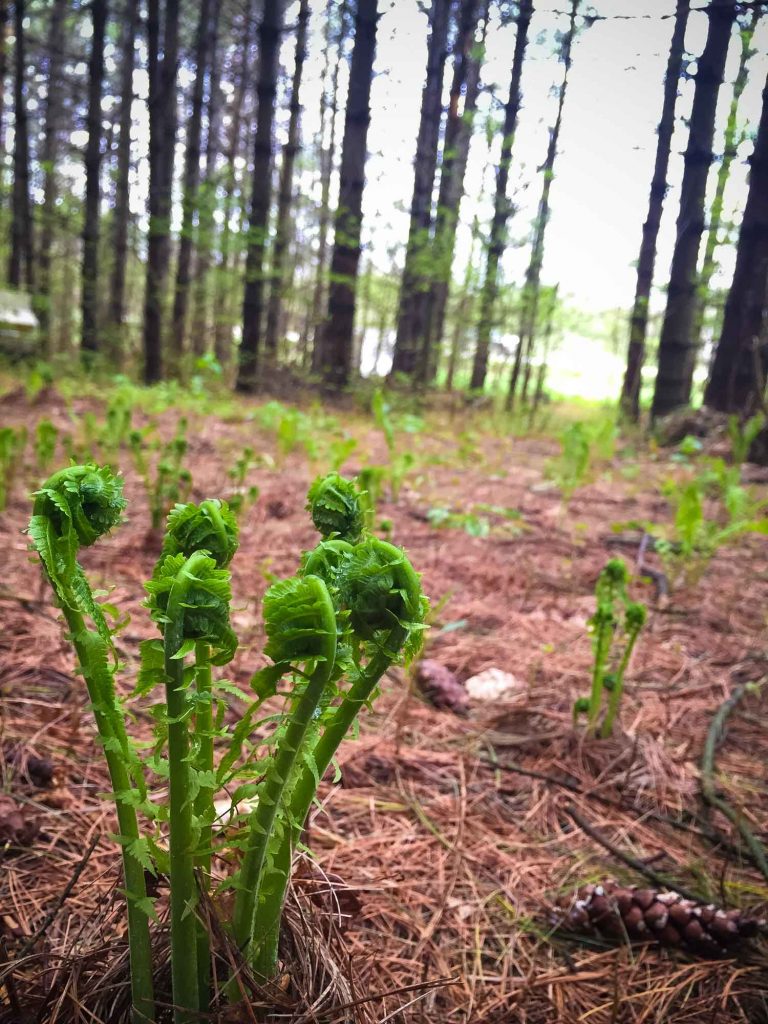
Don’t pick the roots
Foraging the roots means the plant can’t continue to reproduce. So if you’re looking for leaves or flowers leave the remainder of the plant.
This one is more difficult than it sounds as the edible part of wild ginger is the root.
It’s practically impossible to take ramps without the root – so instead don’t take too much of the plants.
In the past I’ve been lucky as the land was abundant.
Be aware of the local water source and the quality of land.
When you eat wild edible plants you’re also consuming the water it uses to grow.
So if your plants grow near polluted water it means you’re basically drinking that polluted water.
Cooking often cannot remove these harmful pollutants.
It is best to just stay away from plants that grow on polluted land or near water that may be contaminated by heavy metals or downstream from land used in agriculture.

Where to Go Foraging Edible Plants
First decide what you’d like to find as it really depends on where you’ll need to go.
During ramp season you’ll need a forested area with an uphill slope near a water source.
Public parks can be great but you need to get there before the professional foragers arrive.
It’s best to ask around with friends and family to see who has private land outside the city.
ALSO READ: Beer Battered Pickled Ramps
Avoid contaminated areas near highways, landfills, train tracks or factories. Stay away from land that looks like it may have been sprayed.
Avoid dog marking areas like the entrance to a park or where a field meets a forest.

Foraging Wild Plants in Cities and Urban Areas
Toronto has many public parks and green spaces but I’m wary to forage in the city.
It is recommended that a city should have 10-15 years of pesticide-free use before foraging.
Unfortunately Toronto stopped spraying in 2009 so we have a few years to go.
That doesn’t mean we’re completely out of luck for food in the city. Not Far from the Tree rescues fruit around the city.
I’ve also grown vertical gardens on back patios.
If your city has been pesticide-free for long enough check on the legality of foraging in the city.
What to Wear Foraging
This is not the time to wear your cute new shorts and flip-flops.
You’ll find foraged wild edible food in forests and dense areas of parks. Wear closed-toed shoes, long sleeves and pants. I prefer to layer as it can get warm.
If you’re foraging in the spring a raincoat is wise.
In a backpack consider bringing gardening gloves, a trowel, small rake and scissors.

How to Cook Foraged Foods
Eating foraged foods is rewarding but also can be dangerous for many reasons:
Poisonous plants often look similar to edible plants.
Some plant parts are edible, some are not. I’ve picked wild ginger. The root is okay to eat but the leaves are flower are not.
I also discovered they aren’t a good candidate for pickling because the vinegar increases the carcinogenic properties of the plant.
You may need to cook some plants. For example, morels can make you sick if you eat them raw. Try this easy morel pasta.
Some edible plants have poisonous look-alikes.
Sometimes the season affects what part of plant is edible. For example stinging nettle shouldn’t be eaten after it seeds.
Once you determine the foraged plants are edible. It’s best to wash thoroughly before use. Cutting the roots on site is a good idea as they hold most of the soil.
Also leave ramps to soak in a bowl before starting the washing process. Adding a spoonful of white vinegar or lemon juice helps.
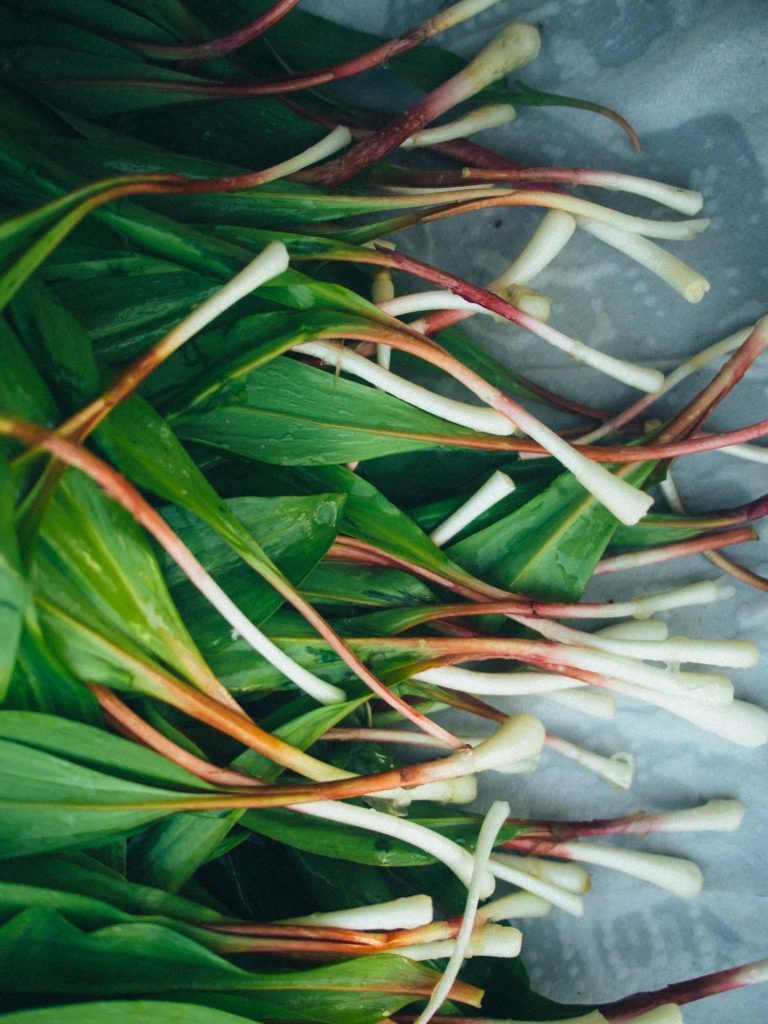
Foraged Food Recipes
So you’ve gone out foraging and now you’re wondering what to do with all of these wild foods? Here are some of our favourite ways to cook with ramps and other foraged foods.
Sprouted chickpea hummus with pine needle
Spruce tips vinegar
Maple blossom beignets
Beer battered fiddleheads
Foraging Wild Plants Resources
Foraging Books
Peterson Field Guides
Foraged Flavor
North American Mushrooms
Useful Foraging Sites
Foraging & Feasting on Facebook
Poisonous Plants of Canada
Is there anything we missed? Share your best foraging tips in the comments below.
Pin it: Foraged Foods
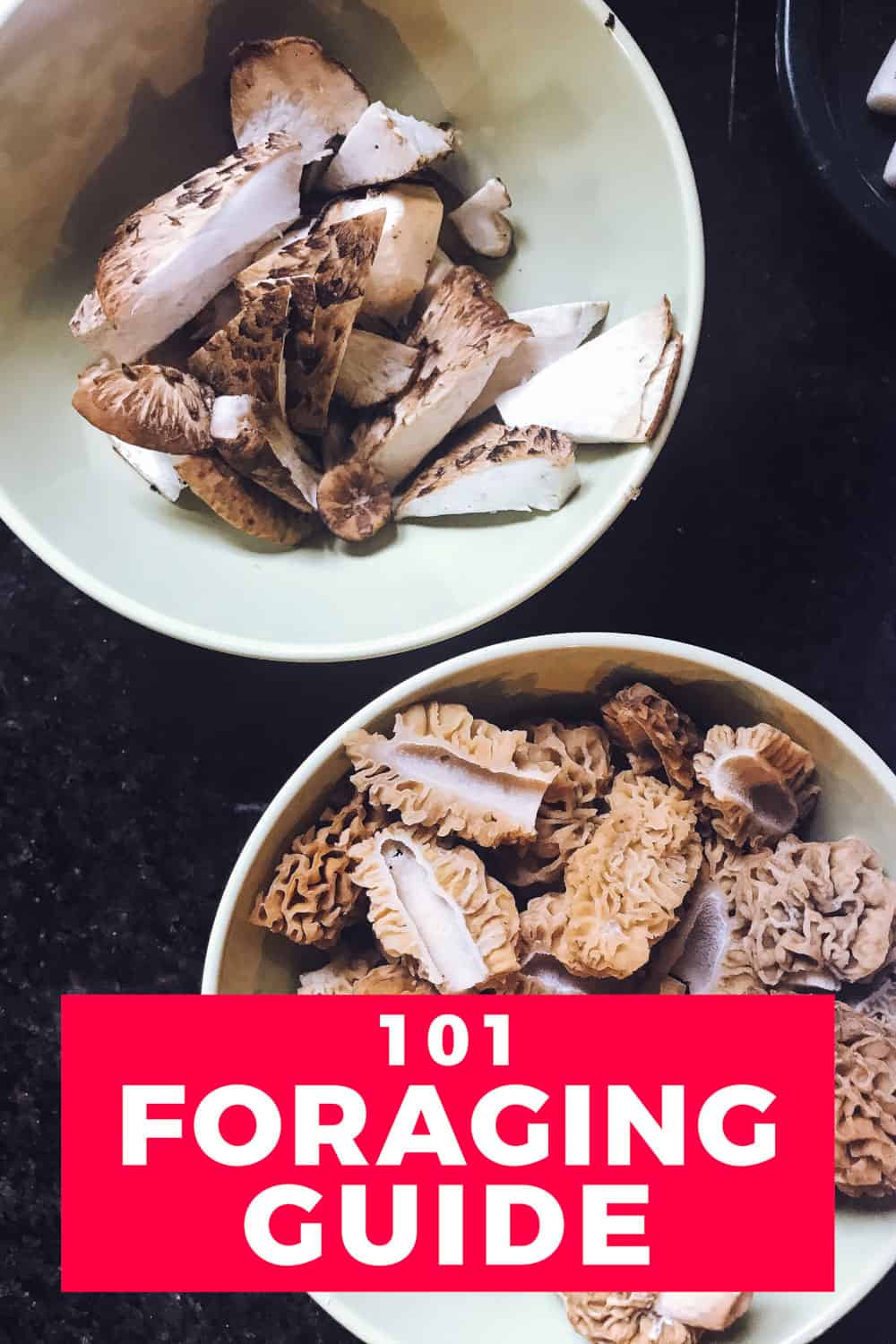
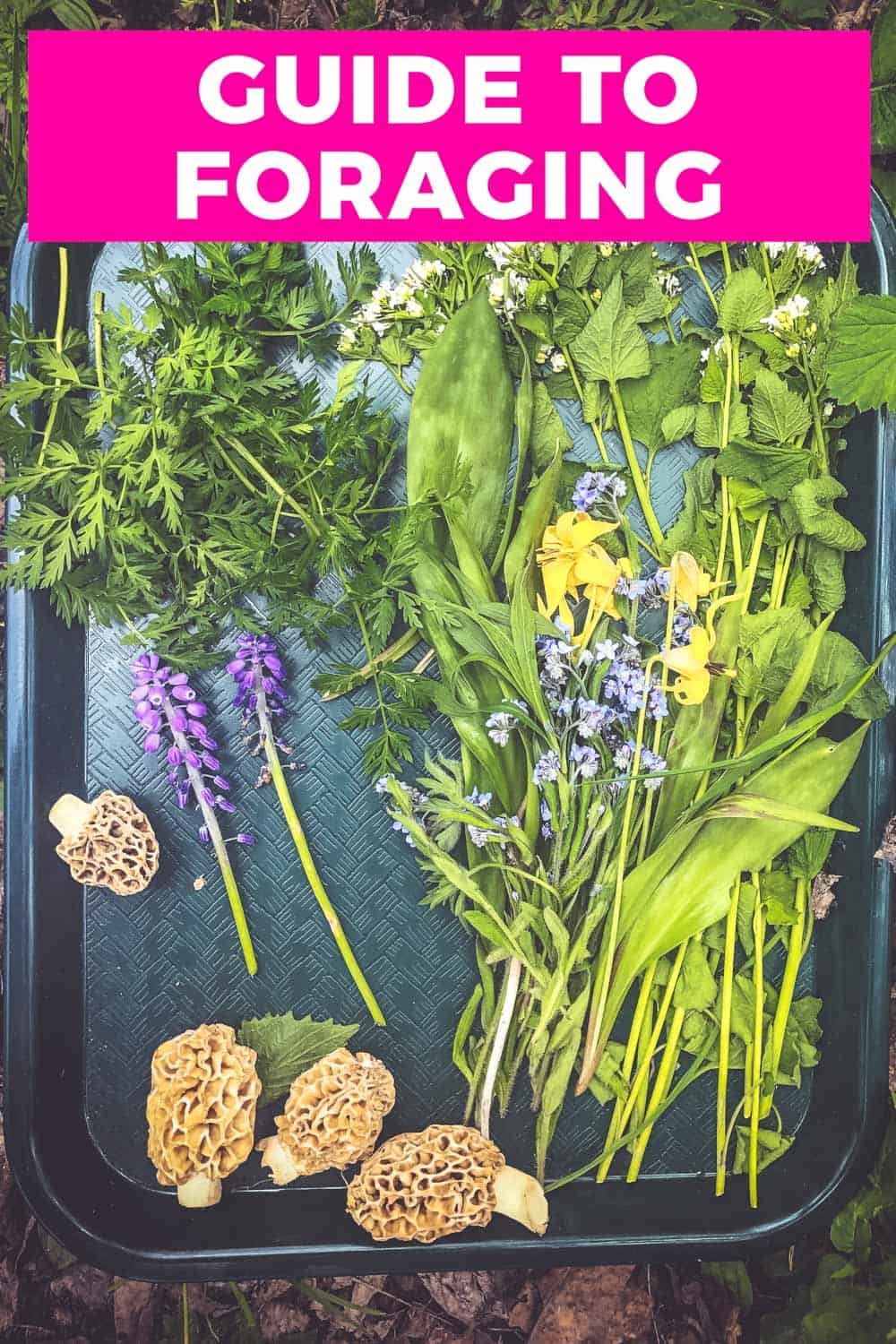


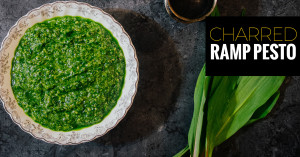
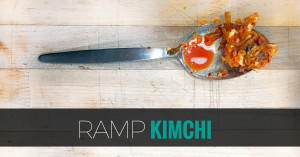
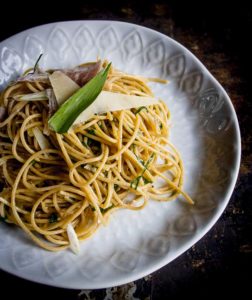
Nice to see you getting into foraging, we love it. Picking wild garlic (ail des bois) has been illegal in Quebec for years because of over harvesting.
I really like the idea of foraging but I have no idea where to start – thanks for this guide, I’ll follow the advice!
the easiest way to start foraging , in my opinion, is to scout out wild raspberries and blackberries. in my neck of he woods (SW Michigan) there are numerous parks that aren’t really parks but green spaces set aside. the city and county don’t od anything with them but mow every now and then. raspberries and blackberries grow on the boundaries of woods and disturbed land (aka kind of lawn space) lots of people bring their dogs to these spaces but only use the lawn” spaces. I have discovered that once I have found a really good spot I have to get there early in the morning or I will be picking the seedy berries. Take shallow plastic containers (like those you get olives in) and if you have a good spot use a number of containers (in a backpack) so the berries don’t get squished. Can you tell I can hardly wait for berry season? Superb on ice cream in the middle of winter
Brilliant, detailed write-up that covers all the bases and then some – bet you could expand a bit and sell an ebook on this!
Had to check in and see what my old South America rival was doing, hahaha! Congrats on your success and new adventures 🙂
It’s very good idea . I shall try to follow your advise . Thank you very much.
I really like the idea of foraging but I have no idea where to start – thanks for this guide, I’ll follow the advice!
I really like the idea of foraging but I have no idea where to start – thanks for this guide, I’ll follow the advice!
Could you help me identify the plant on the cover of this post?
It grows EVERYWHERE on my property and I have no idea what it is. But the roots are leaves are identical.
Absolutely they are day lilies.
https://www.youtube.com/watch?v=AJFHfPEKQYM ( Me out foraging for wild food ) – Thank you for thses posts about where to forage — I really enjoy them. It is great to see best practices and your photos.
Awesome! I just came across your page here up late at the computer foraging for lists of wild edible’s (plants that is) and came across your webpage and, well…bacon kind and sorta doesn’t really go tgether with vegetable really kinda sorta if the chefs half of ya’s (or both ) look at all the different food trends (ei; vegan, vegetarian, raw foods etc etc. And I just had to clic here cause I an just a foodie with a fast metabolism and have just discovered this Paleo food trend while looking for courses of cologne so I can keep my joints healthier for later. When I arrived at you site I thought, Awe, what a lucky guy. There’s a pipeliner who found The One. Not joking because I AM a pipeliner myself amongst other skilled trades. And when I see where you two where at … Alberta (I live in Saskatchewan now) I just had to say hi. Maybe I can send you’s an awesome personal paleo food recipe collection that I found by fluke online. Its huge and app huge for me to hard to myself.
darned spell correct! “sources of cologen” not couses or cologne.. and “It’s huge and 3.5 mb and too huge for me to hoard to myself.”
A lot of people think bacon is magic means I want bacon all the time but it’s just the opposite. At home we rarely eat meat and when we do it’s a garnish or something to give food a little boost but it’s never at the forefront. We love veggies too! And neither of us will ever be vegetarian but we are concerned about where our food comes from and eat plant based quite often – let’s face it, it’s just faster to get to the table!
Would also recommend knee pads if you’ll be spending much time digging stuff up. Great guide!
Agree 100%, knee pads would help so much!
Best practices for harvesting wild leeks leave the bulbs and some leaves intact, so that the plant can reproduce. Your article says this is impossible to do… but we have not found this to be the case! Here are some great guidelines from United Plant Savers.
Sustainable Harvesting Practices:
ONE LEAF PER PLANT: Harvest only the leaves, and leave some ramps fully intact. Rather than cutting off all the leaves from a bulb, take only one leaf per plant. This will leave a leaf for photosynthesis, allowing the plant to continue to grow and reproduce (without any leaves, the plant could go into dormancy). Digging up whole ramps not only reduces ramp population and prevents reproduction, but a disturbance to the soil disrupts its ecology and lets invasive plants become established.
https://www.unitedplantsavers.org/ramps
Any kind of foraging is a disturbance to the soil as you are removing plants but if you are looking to eat more than just the leaf, which most people are, this isn’t an option.
We forage from a very healthy area where we’re the only one harvesting and take less than a quarter of the population. We want to preserve the land so we can come back each year.
Yes, it’s very different when you are a steward to your own land versus shared/public forest.
Absolutely, honestly I’ve never found public land to be very fruitful for foraging. It is also problematic because even if every forager just took 5% there only needs to be a few foragers to take most of the population.
We have been on a few foraging courses for fun over the years, mostly invitations from those who run them … and we love to harvest ramps (which we call wild garlic here in the UK, though there are different plants that go by that name elsewhere in the world). So many great ways to use it. We have never foraged mushrooms because of that issue with edible ones having lookalikes in the poisonous category – just not worth the risk. I’ve heard some people dismiss foraging as being about free food and they don’t need to, which is kind of sad because the pleasure is in enjoying time in the natural habitat, and eating edible plants that are not usually part of the diet.
What a great post! Good job! It’s ironing now that urban spaces have crawled so far out of cities that we are now going back to our roots and enjoying foraging again! I wish that we had more availability in cities, or even more fruit trees for people to enjoy. Sadly where I live there is almost nothing left. I’m glad you mentioned the very important part that we shouldn’t take too much to preserve the sustainability of it! 🙂
What a wonderful guide! I think it’s important to talk about remaining sustainable when foraging – I’m so worried that people will destroy plant populations especially around large cities.
Amazing! This sounds so adventurous. I am sure it must be a lot of fun discovering foraging edible plants. Lovely read! Thanks for sharing.
Wild ginger is quite beautiful. I had no idea it looked like that! I find this all so fascinating! It reminds me a bit of summers of my childhood spent exploring the woods behind my grandmother’s house in Michigan. We used to pick and eat wild berries growing in the forest, and as a child it always felt somewhat magical to me. I used to devour books about identifying and using plants for medicinal purposes, too. And then I’d pretend I was a healer off to go save the world haha! I barely know anything about foraging plants for food purposes though, but I’d love to learn more about it. It all seems so neat!
Wild ginger is one of my favourites, I love that it has a delicate floral flavour instead of the spiciness of ginger we’re familiar with.
Thanks so much for sharing this wonderful guide!! Our favorite thing to harvest is the stinging nettles.
Very cool, what do you do with them?
OMG! WILD GINGER!! Every one I’ve spoken to about wild ginger in Quebec has told me it was extinct. I’ve been looking for it for years. My grandmother used it in cooking and in medicines. Also cat tails are an incredible food source and sadly are being invaded and choked out by some invasive decorative reed.
Look for wild ginger where you see ramps. I do know Quebec has an issue with over foraging, maybe that’s why you’ve had trouble finding it?